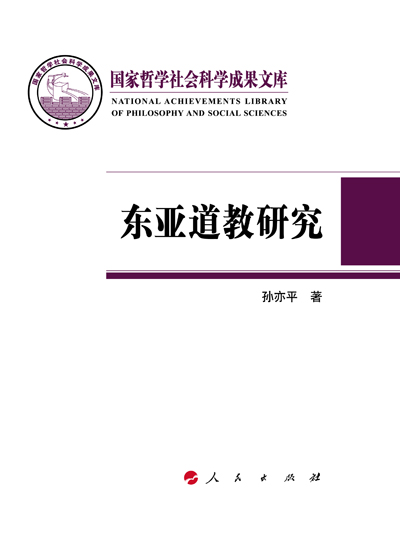Milestone in East Asian Daoism Studies

Studies on East Asian Daoism
Author: Sun Yiping
Publisher: People’s Press
Daoism is woven in the fabric of Chinese history. In theory, it is guided by the extensive and profound Daoist philosophical classics of Laozi and Zhuangzi. In practice, it functions closely to folk culture. Daoism provides an alternative to the Confucian tradition in China, while Daoism and Confucianism form the basis of Chinese culture. Therefore, studies on Daoism will help illuminate the Chinese nation’s national character, psychological structure and behavior, promoting China’s cultural development.
The 1-million-character Studies on East Asian Daoism took Su Yiping six years and put forward the concept of “East Asian Daoism” for the first time while detailing the religion’s evolution and rich connotations within the East Asian cultural context, opening a new chapter for the study.
East Asian Daoists focus on the goal of obtaining “Dao,” or the “Way,” the unnamable source of vitality in a universe of constant transformation. They worship a complex hierarchy of sacred powers that includes at its apex the Three Pure Ones and also a wide variety of personal gods, who were once human beings, but, over the course of their lives, achieved transcendence, sometimes understood as immortality.
The book systematically explores the peaceful transmission of Chinese Daoism to Korea, Japan, and Vietnam as well as its integration with other cultures at different times. It also introduces the transformation of local religions and development of new schools in the process.
A number of Daoist doctrines, philosophical classics, poems, music, folk tales and novels in East Asian Daoist documents are discussed in the book. In addition, it analyzes the religion’s contribution to the medical field by explaining the relationships between Taoist external and internal alchemy, Qigong exercises, and other skills, to achieve the Dao. Finally, it demonstrates the religion’s influence on a variety of elements of culture, such as architecture, sculpture, rituals and worshiping ceremonies.
The book is a strong demonstration of the multi-faceted image of East Asian Daoism, with strong academic authenticity.
As the world civilization transitions from conflict to dialogue, historical changes have occurred. The present and future significance of East Asian civilization gradually began to stand out as exchanges expanded between Christianity, Islam, Judaism and East Asian Confucianism, Buddhism and Daoism, which in turn is promoting a more harmonious world.
Mou Zhongjian is a professor from Minzu University of China.

 PRINT
PRINT CLOSE
CLOSE